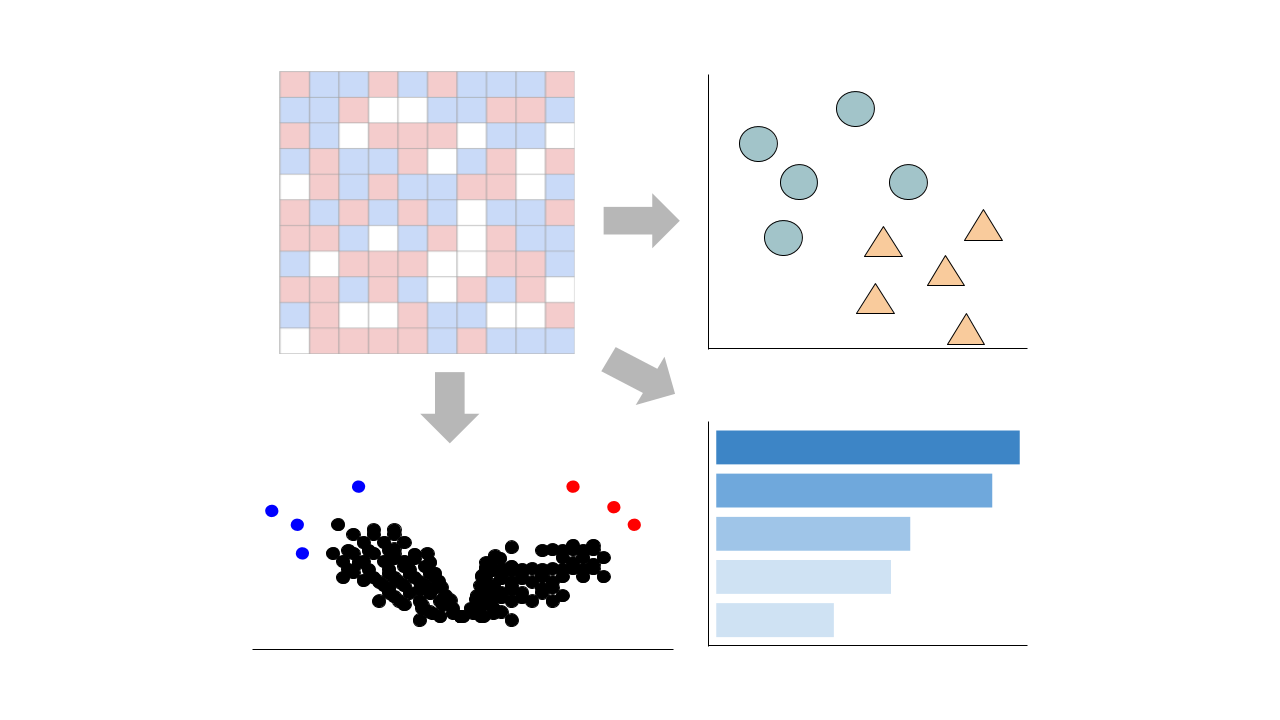 Gene counts are sourced from ARCHS4, which provides uniform alignment of GEO samples.
You can learn more about ARCHS4 and its pipeline here.
Gene counts are sourced from ARCHS4, which provides uniform alignment of GEO samples.
You can learn more about ARCHS4 and its pipeline here.
Select conditions below to toggle them from the plot:
| GROUP | CONDITION | SAMPLES |
|---|---|---|
| Flow-Sorted islet beta cells |
GSM3688762 GSM3688763 GSM3688764
|
|
|
GSM3688765 GSM3688766 GSM3688767
|
Submission Date: Mar 27, 2019
Summary: Transcription factors positively and/or negatively impact gene expression by recruiting coregulatory factors, which interact through protein-protein binding. Here we demonstrate that mouse pancreas size and islet β cell function are controlled by the ATP-dependent Swi/Snf chromatin-remodeling coregulatory complex that physically associates with Pdx1, a diabetes-linked transcription factor essential to pancreatic morphogenesis and adult islet-cell function and maintenance. Early embryonic deletion of just the Swi/Snf Brg1 ATPase subunit reduced multipotent pancreatic progenitor cell proliferation and resulted in pancreas hypoplasia. In contrast, removal of both Swi/Snf ATPase subunits, Brg1 and Brm, were required to compromise adult islet β cell activity, which included whole animal glucose intolerance, hyperglycemia and impaired insulin secretion. Notably, lineage-tracing analysis revealed that these Swi/Snf deficient β cells lost the ability to produce insulin and other key metabolic genes, yet the expression levels of many essential islet-enriched transcription factors were unaffected. Swi/Snf was necessary for Pdx1 binding to the insulin enhancer, demonstrating the importance of this association in mediating chromatin accessibility. These results illustrate how fundamental the Pdx1:Swi/Snf coregulator complex is in the pancreas and we discuss how disrupting their association could influence Type 1 and Type 2 diabetes susceptibility.
GEO Accession ID: GSE128945
PMID: No Pubmed ID
Submission Date: Mar 27, 2019
Summary: Transcription factors positively and/or negatively impact gene expression by recruiting coregulatory factors, which interact through protein-protein binding. Here we demonstrate that mouse pancreas size and islet β cell function are controlled by the ATP-dependent Swi/Snf chromatin-remodeling coregulatory complex that physically associates with Pdx1, a diabetes-linked transcription factor essential to pancreatic morphogenesis and adult islet-cell function and maintenance. Early embryonic deletion of just the Swi/Snf Brg1 ATPase subunit reduced multipotent pancreatic progenitor cell proliferation and resulted in pancreas hypoplasia. In contrast, removal of both Swi/Snf ATPase subunits, Brg1 and Brm, were required to compromise adult islet β cell activity, which included whole animal glucose intolerance, hyperglycemia and impaired insulin secretion. Notably, lineage-tracing analysis revealed that these Swi/Snf deficient β cells lost the ability to produce insulin and other key metabolic genes, yet the expression levels of many essential islet-enriched transcription factors were unaffected. Swi/Snf was necessary for Pdx1 binding to the insulin enhancer, demonstrating the importance of this association in mediating chromatin accessibility. These results illustrate how fundamental the Pdx1:Swi/Snf coregulator complex is in the pancreas and we discuss how disrupting their association could influence Type 1 and Type 2 diabetes susceptibility.
GEO Accession ID: GSE128945
PMID: No Pubmed ID
Visualize Samples
 Visualizations are precomputed using the Python package scanpy on the top 5000 most variable genes.
Visualizations are precomputed using the Python package scanpy on the top 5000 most variable genes.
Precomputed Differential Gene Expression
 Differential expression signatures are automatically computed using the limma R package.
More options for differential expression are available to compute below.
Differential expression signatures are automatically computed using the limma R package.
More options for differential expression are available to compute below.
Signatures:
Select conditions:
Control Condition
Perturbation Condition
Only conditions with at least 1 replicate are available to select
 Differential expression signatures can be computed using DESeq2 or characteristic direction.
Differential expression signatures can be computed using DESeq2 or characteristic direction.
This pipeline enables you to analyze and visualize your bulk RNA sequencing datasets with an array of downstream analysis and visualization tools. The pipeline includes: PCA analysis, Clustergrammer interactive heatmap, library size analysis, differential gene expression analysis, enrichment analysis, and L1000 small molecule search.

 Chatbot
Chatbot Single Gene Queries
Single Gene Queries
 Gene Set Queries
Gene Set Queries
 Bulk Studies
Bulk Studies
 Single Cell Studies
Single Cell Studies
 Hypotheses
Hypotheses
 Resources
Resources
 Contribute
Contribute
 Downloads
Downloads About
About
 Help
Help